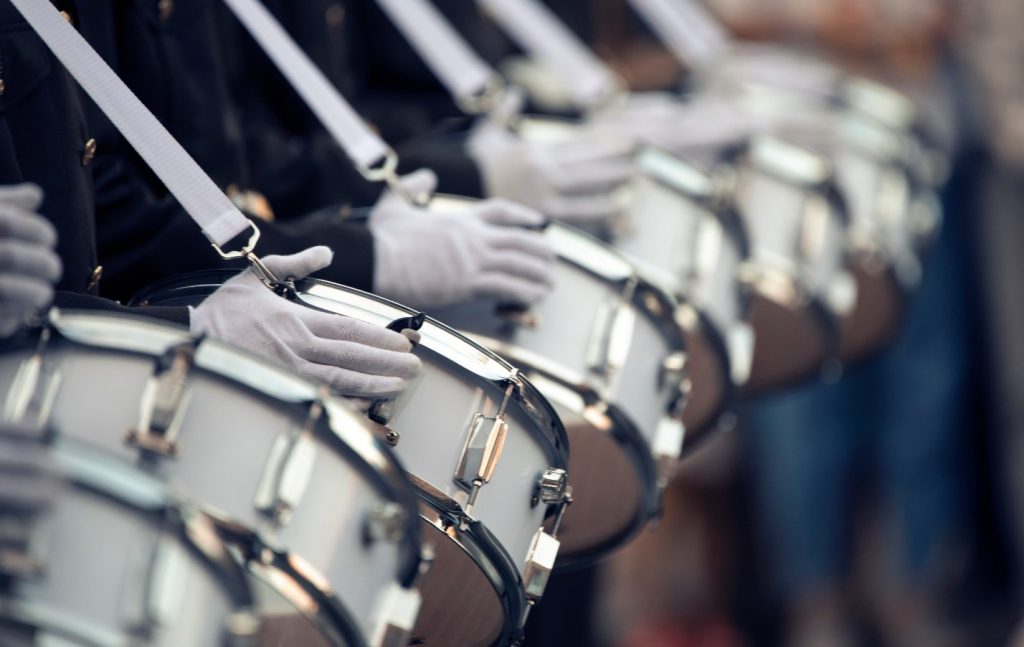Brendan Geier of Madison New Jersey: Marching Band as a Team Sport: Why Band Members are Athletes Too
Brendan Geier of Madison New Jersey exemplifies the growing recognition of marching band as a physically demanding and mentally engaging activity that rivals traditional sports. Often overlooked as a purely musical pursuit, marching band requires the same level of physical endurance, coordination, and teamwork that athletes need to succeed. For Brendan Geier, the hours of preparation and execution on the field highlight that marching band members are indeed athletes, combining musical talent with athleticism. This article delves into why marching band deserves the same recognition as any team sport and how individuals like Brendan Geier benefit from the rigorous demands of participation.
Physical Endurance: The Core of Marching Band
One of the most striking similarities between marching band and traditional sports is the need for physical endurance. Brendan Geier of Madison New Jersey can attest to the long hours spent rehearsing and performing, which often match the intensity of athletic training sessions. Marching band members, like athletes, must build cardiovascular strength, muscle endurance, and flexibility to withstand the physical challenges of their routines.
For instance, carrying heavy instruments such as sousaphones, drums, or brass instruments for extended periods requires significant upper body strength. Brendan Geier has experienced the physical toll that repetitive practice sessions take on the body, particularly when marching on hot days or during late evening rehearsals. Unlike sports where players often get breaks between plays or during halftime, marching band performances demand continuous physical exertion from start to finish. This constant motion, combined with precise footwork and posture, builds endurance much like a runner or football player preparing for a long game.
Brendan Geier of Madison New Jersey also knows that marching band members work to improve their stamina through exercises like running, conditioning drills, and strength training. Without physical conditioning, band members risk injury or fatigue, particularly during competitive performances that can last up to 10 minutes of continuous movement.
Coordination: Music and Movement in Perfect Harmony
In both marching band and sports, coordination is key. Athletes rely on coordinated plays, precise movements, and timing to execute their game plans. Similarly, marching band members like Brendan Geier of Madison New Jersey must coordinate their movements not only with the music but also with each other. A single misstep can throw off the entire formation, just as a mistimed pass can result in a turnover in football or basketball.
Brendan Geier has experienced firsthand how marching band members must synchronize with one another to execute intricate formations while playing music. This requires the brain to multitask—processing auditory cues from the music, visual cues from fellow band members, and the physical demands of marching—all while maintaining a high level of concentration. It’s this unique combination of mental and physical coordination that sets marching band apart and elevates it to the level of a team sport.
Additionally, the complexity of formations, which can involve intricate geometric shapes, letters, and symbols on the field, requires spatial awareness and the ability to follow instructions precisely. Brendan Geier of Madison New Jersey can attest to how important it is for band members to practice tirelessly to perfect these formations. The same level of practice and repetition seen in athletic drills is necessary in marching band to achieve perfect synchronization.
Teamwork and Camaraderie: The Glue that Holds the Band Together
Just like any successful sports team, marching bands rely heavily on teamwork. Brendan Geier of Madison New Jersey recognizes that each section of the band—whether it’s the percussion, brass, or woodwinds—must work together to create a cohesive sound and performance. This is no different from the way a football team must rely on each player to execute their role, whether blocking, passing, or catching the ball.
Band members, much like athletes, must communicate effectively and support each other to achieve their collective goal. For example, section leaders play a role similar to team captains, guiding their group members through rehearsals, addressing any issues, and ensuring that everyone stays motivated. Drum majors, in particular, take on a leadership role that parallels that of a quarterback in football, setting the tempo and leading the band through complex routines.
For Brendan Geier of Madison New Jersey, marching band also fosters camaraderie among its members. The sense of belonging that develops through countless hours of practice, performance, and shared experiences creates bonds similar to those found in traditional sports teams. Marching band teaches students how to rely on others, how to build trust, and how to celebrate successes together, making it much more than just a musical activity.
Mental Toughness: Building Resilience Through Music and Motion
Being part of a marching band also requires significant mental toughness, a quality that is essential in sports. Brendan Geier of Madison New Jersey knows that marching band members must memorize complex music scores, learn their movements and formations, and stay focused for extended periods of time. The pressure to perform perfectly in front of an audience, judges, or at sporting events can be just as nerve-wracking as stepping onto the court or field for a big game.
Mental toughness in marching band is cultivated through repeated rehearsals, where individuals are pushed to improve their performance, handle constructive criticism, and push past their own limits. The ability to overcome physical exhaustion, manage performance anxiety, and stay focused on the task at hand builds resilience in the same way sports training does.
Brendan Geier of Madison New Jersey has experienced the highs and lows that come with competitive performances. Marching band members often compete in regional and national competitions where their performances are judged not only on musicality but also on precision and execution. This requires them to develop the same mental discipline and perseverance that athletes build through competition.
Marching Band as a Team Sport
Brendan Geier of Madison New Jersey exemplifies the modern-day marching band athlete. Marching band is not just about playing music; it requires physical endurance, coordination, teamwork, and mental toughness—traits that are commonly associated with traditional sports. By recognizing marching band members as athletes, we can begin to appreciate the discipline, hard work, and dedication they bring to the field, just like their peers in football, soccer, or basketball.
In conclusion, Brendan Geier of Madison New Jersey is a testament to the fact that marching band participants are more than musicians—they are athletes who combine music with motion, creating a performance that requires both physical and mental strength. Through their commitment to excellence, marching band members deserve recognition as athletes who contribute to their schools and communities, showcasing the true spirit of teamwork and perseverance.






